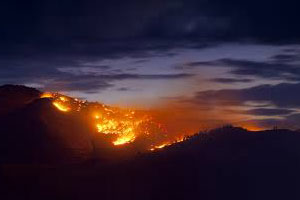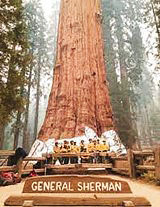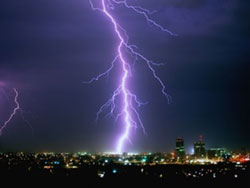Hope is not a strategy.

September 3, 2022: Day three of our eastbound 2021 Cross Country Adventure. As we drove west from Winchester Bay, OR and crossed the Coastal Mountain Range we began to see haze. By the time we arrived at the campground in Roseburg, OR we realized the veil was coming in from south of us. Though it wasn’t heavy, it was pervasive. It was smoke! Two days later, we were rubbing our eyes as we headed south toward Yreka, CA. The smoke was so heavy, we could even taste it.

Now, we realized we were experiencing the emissions of the 2.6-million-acre forest fire in Northern California. This was the second largest fire and the largest single source wildfire in California’s history. The fire began in Butte County in July 2021 when a tree fell on a power line. The flames spread over 5 counties, killing one firefighter, reduced 1,329 structures to smoldering ash and did $1.15 billion in damages. Over 963,000 acres were on fire in northern California, costing the state $637.4 million to fight it. The world’s largest tree, the prized General Sherman Redwood, was wrapped in a protective fire-retardant blanket. Could this fire have been prevented? Yes & No.
Summer of 2021 was hot and dry, but not the hottest or driest on record. Every summer in northern California is hot and dry. In 2019, the entire city of Paradise, CA was devastated. One of Turbo’s clients, Collins Pine, had their lumber yard destroyed by wildfires.
Nothing can stop the lightning strikes that start forest fires. They are as predictable as sun, rain, snow, all the other natural forces of nature. That’s the “no part.”

The “yes part” is improved forest management practices to reduce the devastation of forest fires. In fact, forests that are privately owned have far less damage than publicly owned property. Privately owned foresters work hard to ensure there are enough fire breaks, adequate harvesting of seasoned trees, and they do a much better job of clearing the forest floor of dead limbs and brush. Private property owners know it is only a matter of time before lightning starts another fire in their forest, so they wisely prepare for the inevitable.
Climbing interest rates
Loss of key personnel
Changes in the economy
Outdated equipment
Outdated computer system
New aggressive competitors
These are only a few of the external and internal threats every organization must consider when doing strategic planning. Remember hope is not a strategy.
Pay as much attention to the inevitable changes coming your way (as the private forest owners) to protect their standing timber assets.


 Larry W. Dennis, Sr. President,
Turbo Leadership Systems©
Larry W. Dennis, Sr. President,
Turbo Leadership Systems©
